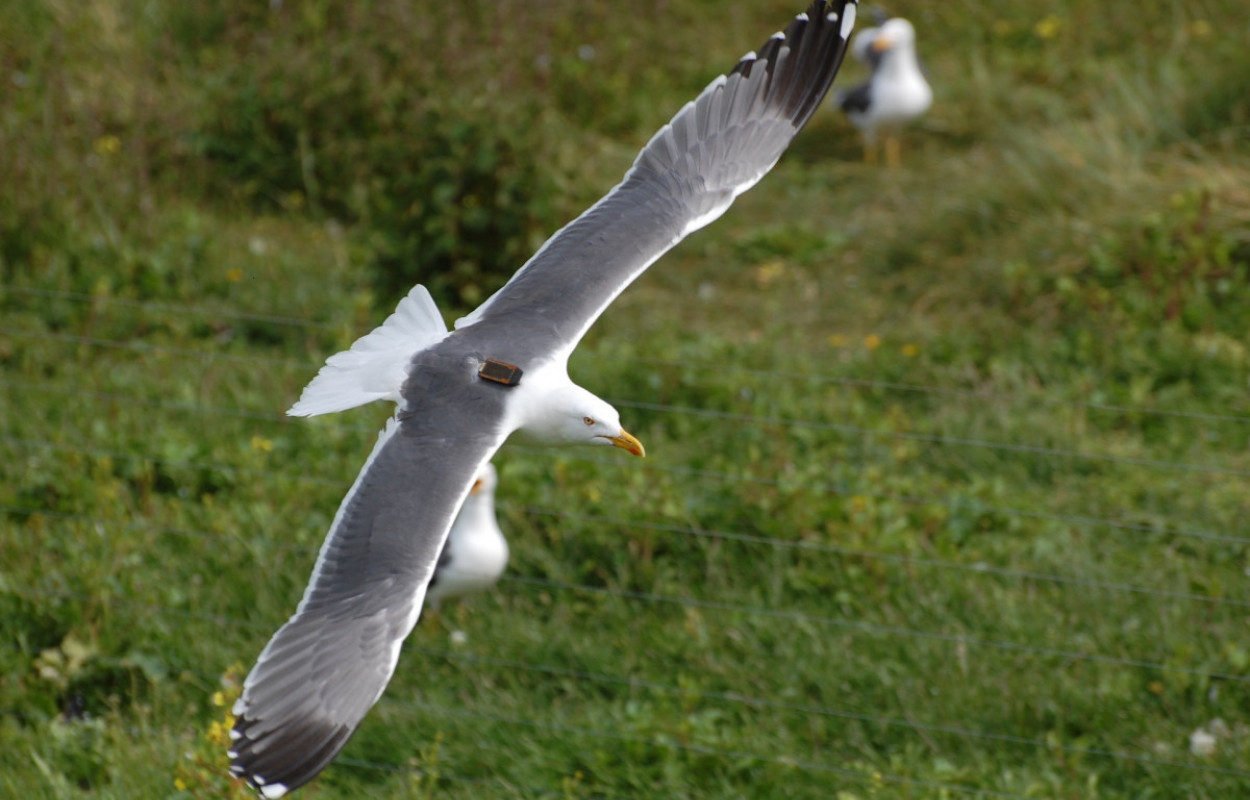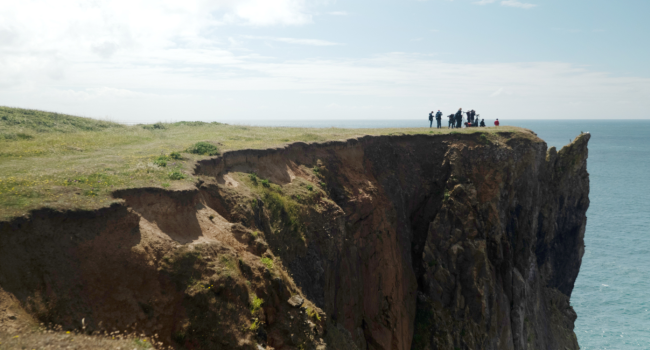GPS tracking reveals landfill closures induce higher foraging effort and habitat switching in gulls

Author(s): Langley, L.P., Bearhop, S., Burton, N.H.K., Banks, A.N., Frayling, T., Thaxter, C., Clewley G., Scragg, E. & Votier, S.C.
Published: November 2021 Pages: 13pp
Journal: Movement Ecology
Digital Identifier No. (DOI): 10.1186/s40462-021-00278-2
New research from a collaboration between BTO, Natural England and researchers at the University of Exeter has used GPS-tracking to investigate the movement behaviour of Lesser Black-backed Gulls in response to landfill closures. Gulls were found to increase their foraging effort and switch to alternative habitats following the loss of this important food resource.
During the 20th century, gull populations across the globe increased rapidly in response to human activities, with the availability of waste food in landfill sites a key driver of their success. However recently, some gull populations have declined, particularly at formerly large coastal colonies, with the closure of tips likely a contributing factor. Previous gull studies have shown reductions in reproductive performance and changes in diet following landfill closures. However the implications for the birds’ movements have not previously been studied.
This research used GPS-tracking data from adult Lesser Black-backed Gulls breeding at two colonies within Special Protection Areas where the species is a designation feature – South Walney, Cumbria and Ribble Marshes, Lancashire – to investigate changes in movement behaviour following the closure of major landfill sites within the birds’ foraging range. In the year after the landfills closed, breeding gulls increased their foraging effort as they had to travel further and for longer on foraging trips. They also switched to alternative foraging habitats. Gulls breeding at South Walney increased their selection of agricultural areas following landfill closures, whilst birds breeding at Ribble Marshes foraged more in nearby towns and cities.
Although the long-term consequences of landfill closures for Lesser Black-backed Gulls are unclear, these results highlight how the availability of anthropogenic resources far outside protected areas may influence gull movement behaviour, highlighting the importance of spatial scale when attempting to conserve and manage highly mobile species like gulls. In the short term, gulls responded to landfill closures by switching to forage either in agricultural areas or urban habitats. These habitat switches may alter the location of human-gull conflicts, as foraging gulls in agricultural areas may steal livestock food while those in towns and cities engage in perceived nuisance behaviours such as fouling, littering and food-snatching, potentially requiring management interventions. Finally, this study highlights the value of technology such as GPS-devices as a tool to monitor rapid behavioural responses of birds to future environmental change.
Abstract
Background: Landfills are a major subsidy for some animals, with implications for their life history and demography. Gulls feed extensively on food from landfills and closures are expected to have ecological consequences, but how this influences movement ecology is virtually unknown.
Methods: We used GPS-tracking to quantify foraging behaviour and habitat choice of lesser black-backed gulls (Larus fuscus) breeding at two colonies before and after closure of two nearby landfills.
Results: Following closure, gulls from both colonies travelled further and for longer to forage. Gulls also changed habitat selection, although this differed by colony - birds from one colony shifted to agricultural habitats, while at the other, increased their use of urban areas. These behavioural responses had no effect on adult body condition but hint at potential direct effects of higher foraging costs and indirect impacts by shifting to new habitats.
Conclusions: Our results demonstrate how landfill availability influences gull foraging movements and habitat selection. We also emphasize the value of biologging to detect rapid behavioural responses in contrast to more conventional demographic approaches, which is especially important for animals that spend the majority of their lives away from direct observation.








Share this page